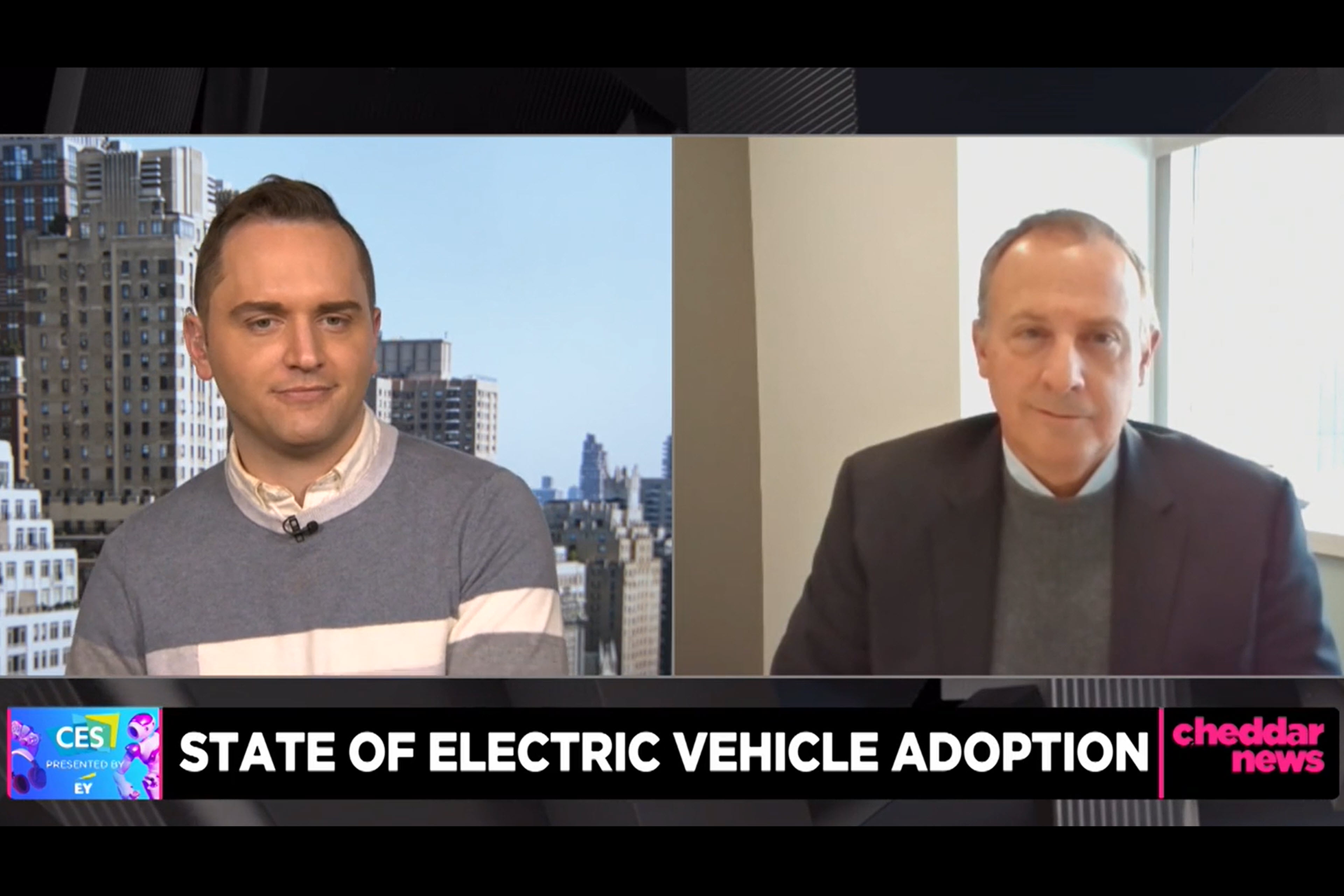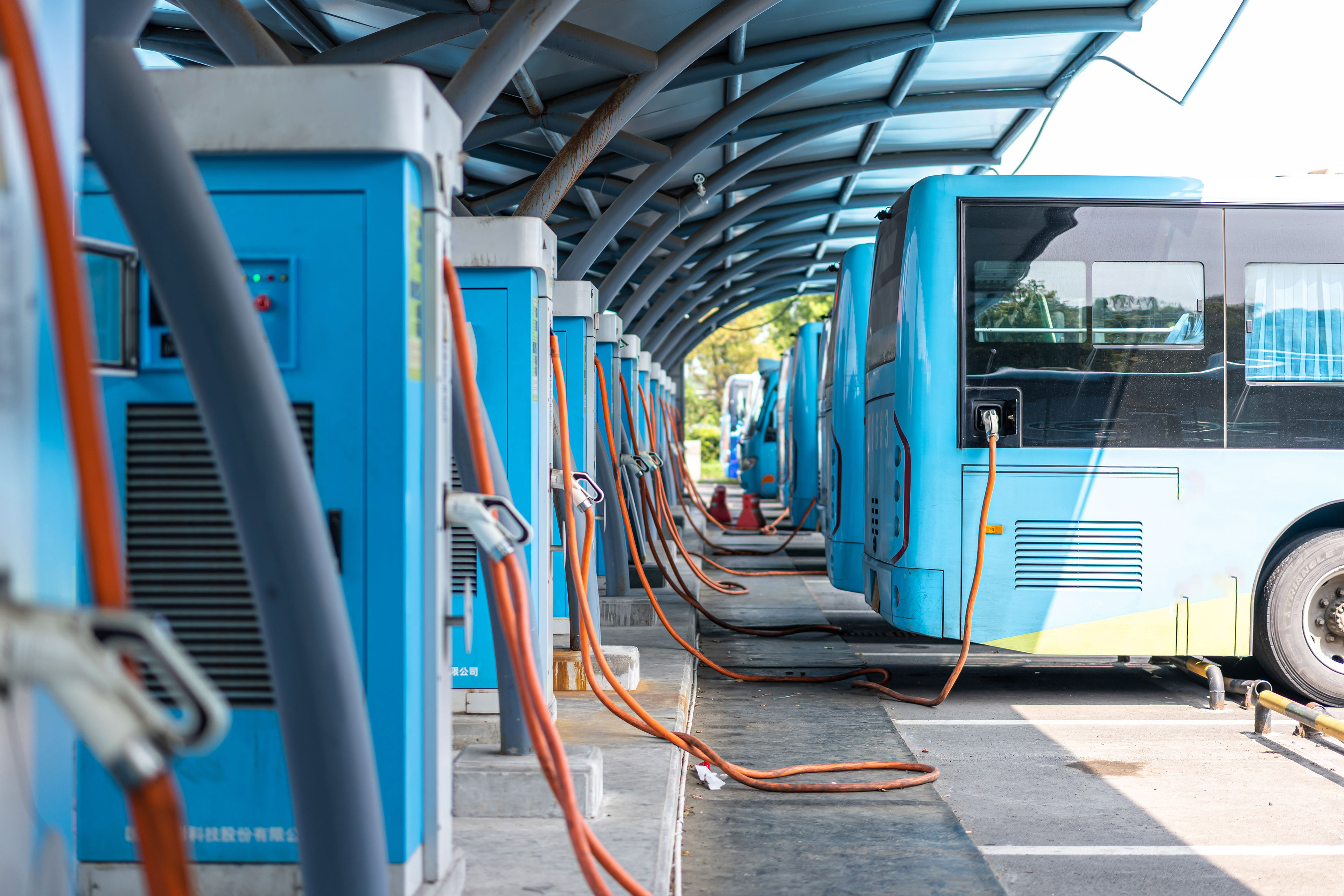EY refers to the global organization, and may refer to one or more, of the member firms of Ernst & Young Global Limited, each of which is a separate legal entity. Ernst & Young Global Limited, a UK company limited by guarantee, does not provide services to clients.

Zero-emission vehicle transformations are complex, interconnected transitions with long-reaching impacts.
In brief
- Major federal legislation, such as Infrastructure Investment and Jobs Act (IIJA) and Inflation Reduction Act (IRA), significantly improve the zero-emission vehicles (ZEVs) business case in the US.
- Establish internal and external partnership networks, co-define and communicate your detailed transition goals and plans early and often.
- Engage employees in the transition plans and showcase the benefits of zero-emission vehicles (ZEVs) to drive adoption, advocacy and address uncertainty.
Article contributors include:
- Sangram Bhosale, Vice President of Supply Chain, Xcel Energy
- Jacob Bierschenk, Manager, Ernst & Young LLP
- Zhehao Jin, CFA, FRM, EY-Parthenon Consultant, Ernst & Young LLP
What comes to mind when people think of a company — the service it provided, the image it evoked, the feeling it provoked? What do people perceive about a company when they see a company vehicle – old vs. new, dirty vs. clean, electric vs. gas engine – on the road or in their community? With more than 8 in 10 US adults reporting that they drive most days in a week¹, and in addition to advertisements, a company’s fleet vehicle is one of the few things that have the potential to be viewed by customers daily. Customers remember how the vehicle looked and the impressions it created in their minds, and it shapes the brand perception.
Companies that are brand savvy and champion corporate social responsibility keep their fleet in top shape and are leading the transition to zero-emission vehicles (ZEVs) to demonstrate their commitment to zero carbon emissions.
It takes a bold vision, an unwavering commitment and robust execution to make the LEAP (launch, enable, anticipate and plan) to a zero-emission fleet. Key steps in executing the LEAP are:
- Launch the right cross-functional team
- Enable the transition
- Anticipate and mitigate transition risks
- Plan, activate and execute the transition
Launch the right cross-functional team
The ZEV transition is a complex, interconnected process with decision impacts that stretch well beyond a single team. In fact, having the right cross-functional and leadership team is the key to a successful transition.
While internal fleet ZEV transitions are generally led by the fleet organization, or a dedicated ZEV transition team, leadership must identify all internal stakeholders who will be impacted, leverage their expertise, engage them and build buy-in from the start. Early engagement of a cross-functional stakeholder group (the ZEV team) is essential for employee adoption and scaling the fleet electrification. The ZEV transition team begins by collaboratively setting the vision supported by clearly defined roles for each stakeholder. By committing to the vision up front and strategically tapping into each stakeholder along the journey, the entire organization can adapt to and navigate through the transition challenges.
While each cross-functional stakeholder represents their specific function, employee engagement in the ZEV transitions spans further. It engages executive leadership, as well as vehicle and charger operators, repair and maintenance technicians, facility managers and other operations-focused personnel. Listening and observing at the field level allows leadership to gain visibility into operational needs and ZEV suitability. Concurrently, these discussions drive a sense of strong employee engagement and buy-in throughout the ZEV transition.
Internal stakeholders who need to be engaged include include the fleet, business units, facilities, procurement, analytics, regulatory compliance, tax, finance, corporate communications and transformation management office.
Beyond the internal stakeholder team, external partnerships are leveraged to provide additional areas of expertise along with an outside perspective.
- Vehicle original equipment manufacturers (OEMs) and upfitters: Partner with legacy OEMs and upfitters with an established market position to ZEV disrupters offering innovative solutions with efficient speed to market.
- Charging providers: Leverage service offerings from charging experts across the end-to-end charging value chain to manage aspects beyond the vehicle transition.
- Utility providers: Engage with utility providers (distribution engineers) early and often to share detailed transition plans and determine opportunities to leverage utilities’ customer fleet electrification programs.
- Peer and adjacent organizations: Establish a hybrid of cooperation and competition with industry peers and other sustainability-driven organizations.
- Industry bodies and coalitions: Connect with a diverse group of partners to drive economies of scale and mutually share leading insights. There are several associations and groups that can assist in the transition.
- Sustainability leaders: Establish partnerships with companies with leading sustainability goals focused on understanding tactics and opportunities to achieve ambitions.
- Federal and state regulators: Leverage federal and state-level bodies that are dedicated to supporting the ZEV transition.
Establishing relationships with a variety of partners unlocks access to industry-leading practices, innovative solutions, and an understanding of the latest market and service offerings. The ever-evolving ZEV landscape requires the transition team to stay informed and continuously adapt their plan.
Governance
A well-defined and all-inclusive governance model aligns internal and external stakeholders. Throughout the transition, internal stakeholders collaborate and drive accountability. Clear goals, champions and a common “way of working” enable the necessary cooperation. Setting clear reporting lines and establishing defined decision-making processes across all stakeholders streamlines the required approvals and checkpoints. Finally, transparency and responsiveness fortify the governance pillars. Clear communication pathways with transparent reporting allow for timely identification and resolution of barriers and bottlenecks.
The cross-functional governance structure
Enable the transition
Traditionally, companies have structured their strategic processes and decision-making linearly. The ZEV transitions ecosystem requires a network, or a ZEV ecosystem, to harness interaction and enable continued coordination, innovation and execution.
Each ZEV function across the ecosystem is responsible for executing in their defined focus area and must deliver on their part of the ZEV transition. Their decisions must be made collaboratively to optimize the overall system. For example, when determining which ZEV will replace an existing internal combustion engine (ICE) vehicle, the charging and operational requirements are factored in the vehicle procurement process. The ZEV transition team must engage with mechanics, vehicle operators, procurement and other stakeholders to define these requirements together.
Engaging with stakeholders early and often is critical to manage the adoption of ZEVs. Recurring themes among field employees, such as mechanics and vehicle operators, are: (1) the transition is happening too fast, (2) what it means for them and (3) why ZEV? While acknowledging the change is big, organizations can get ahead and heed concerns through training and employee engagement with ongoing, open dialogue so employees can ask questions and gather further insight about ZEVs.
From a financial collaboration standpoint, multiple incentive opportunities have recently arisen requiring alignment with an organization’s tax and regulatory compliance functions. Funding from the Inflation Reduction Act (IRA) and the Infrastructure Investment and Jobs Act (IIJA) significantly increase the financial prudency for transitioning to ZEVs. The ZEV transition team must provide visibility to the detailed fleet electrification goals and plans to determine the funding opportunities to effectively capture them.
Beyond operational coordination, adoption management and financial collaboration, there are elements of digital enablement required to drive better decisions. The ZEV transition introduces new data points and systems to the digital landscape, such as charging software and battery diagnostics. As the ZEV transition continues to accelerate faster, bigger decisions will be required and must be supported by data.
ZEV transition enablers
Anticipate and mitigate transition risks
The ZEV market is continuously evolving and that requires constant screening, evaluating and understanding of new developments. The ZEV transition team needs to stay on top of new technologies and can leverage their partnerships to access these innovations to test within the confines of their operations.
Pilot programs are a tried-and-tested way to identify and manage risks. These programs typically involve cross-functional teams and operators organized to conduct small-scale experimentation to better understand and evaluate technologies and potential failure modes. Pilots offer a low-risk learning environment aimed at preparing the organization for transition.
During pilots, the lessons learned and risks identified must be evaluated and addressed. Typical external risks include permitting lead times for chargers, vehicle and charger performance issues, recalls or supply chain constraints (vehicle allocation, long lead times, limited substitutes). Internal risks consist of resistance to adoption, downtime or a lack of charging options available in emergency situations, for example. While the team should not stray away from being an early adopter or advocate because of the risks, it must address the potential by defining mitigation strategies to strengthen the ZEV ecosystem and processes.
Typical ZEV transition risks
In alignment with Xcel Energy’s ambitious corporate commitment to power 1.5 million customer electric vehicles by 2030, Xcel’s fleet organization is dedicated to leading by example.
Plan, activate and execute the transition
Developing and refreshing the ZEV transition plan integrates the goals, knowledge and experiences of stakeholders. This transition plan needs to be constantly refreshed as new knowledge and technologies are available and experiences amassed. The ZEV team should identify the interdependencies across functions to proactively address any constraints. The comprehensive long-term plan will enable the organization to optimize the fleet transition journey by reducing costs and maximizing utilization.
Bringing together the experiences and applying the lessons into a structured roadmap guides the team on the ZEV journey. The roadmap is strategy and people-driven, utilizing the charger and vehicle procurement plans, among others, to map initiatives and key milestones with clear trajectory toward achieving the ZEV vision. To ensure the team remains steady on the trajectory, the roadmap should also have a phased approach, segmented in discrete waves to regularly confirm alignment while designed to build upon each other.
The ZEV world is constantly evolving, and the team is agile. The team must learn from all experiences and apply those lessons as the ZEV transition progresses. The team builds on successes and constantly updates the plan and roadmap adapting to the changing EV world around.
A company taking the LEAP
Xcel Energy, an electric and natural gas energy company serving customers across eight states, has made a commitment to electrify a substantial portion of its fleet.
“In alignment with Xcel Energy’s ambitious corporate commitment to power 1.5 million customer electric vehicles by 2030, Xcel’s fleet organization is dedicated to leading by example. We’re driving the transition by electrifying a significant portion of our companies fleet vehicles by 2030, and have broken our goal into three waves,” said Sangram Bhosale, Vice President of Supply Chain at Xcel Energy.
The company’s three waves include:
- Electrifying all sedans by 2023
- Electrifying all light-duty vehicles by 2030
- Electrifying 30% of medium- and heavy-duty vehicles by 2030
Each wave will leverage knowledge related to vehicle procurement, piloting and deployment, charger procurement, installation and deployment, and completion of training and tooling to help confirm that the fleet operates safely and efficiently.
“Xcel Energy Fleet is on the path to being a top-quartile leader in reducing fleet emission, integrating leading-edge technology, collaborating with like-minded partners, and challenging ourselves becoming trailblazers,” Sangram said.
Summary
Fleet organizations are investing in transitioning their vehicles to zero-emission technologies. By launching the right team, enabling the transition, anticipating and mitigating risks, and planning the transformation to a fully electrified fleet, companies can activate and execute a successful, cost-efficient transformation.
How EY can help
-
Discover how EY's NextWave platform can help transform how your company manages, integrates & leverages data from IoT devices to improve performance.
Read more
Related articles
How proactive charging strategy drives EV transition success
Every company with a commercial fleet will need to develop its own EV charging strategy and contingencies. Read more.
Video: How to accelerate the adoption of electric vehicles
Watch EY Americas Mobility Sector Leader discuss what can be done to speed up the adoption of EVs, and how infrastructure can support this transition.
What utilities can do to secure the eMobility future — and their own
With investment in electric vehicle infrastructure, utilities could earn billions in additional revenue and prepare for the industry’s future. Learn more.






